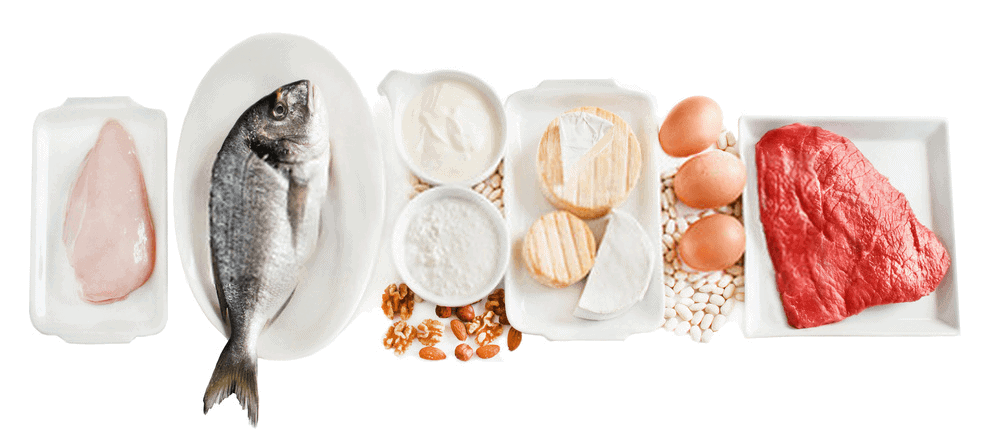Your feline companion becomes delighted at the sight of fishy food and meaty treats. Plus, their favorite way of passing time is stalking squirrels through your kitchen window. Taking these into account, there’s no question that your cat is a devout carnivore.
That said, many cat owners aren’t sure of exactly how much protein they should be feeding their kitties. More importantly, not many understand the cat food label lingo and what terms like crude protein mean. In the following post, I’ll provide an in-depth explanation of what crude protein is and how much should be fed to cats.
Table of Contents
Meaning of Crude Protein
Before we delve into crude protein, you should know that there are different techniques of measuring the amount of this nutrient in food. The two most popular measurements are true protein and crude protein.
Interestingly, crude protein focuses on the nitrogen content of a given product. The concept behind is that every amino acid (the building block of proteins) contains nitrogen. Thus, by examining the total nitrogen content, you can determine the amount of protein in that food.
Important to note though is that a particular pet food could have other sources of nitrogen apart from protein. This means that using this type of measurement can result in an overestimation of the amount of protein.
Contrary, true protein is determined after directly testing the level of protein in a particular food. This makes it a more accurate measure of just how much protein is contained in each serving. Despite the extra level of precision, most manufacturers use crude protein to determine protein content.
How Much Crude Protein Does Your Cat Need?
As mentioned earlier, cats are true carnivores, or what experts like to call obligate carnivores. This simply means that they thrive on a diet consisting mainly of meat.
The Association of American Feed Control Officials (AAFCO) is the organization responsible for setting regulations for nutrient composition of cat and other pet foods. According to its guidelines, adult cat food should contain no less than 26% crude protein by weight in the guaranteed analysis (GA). For kittens, the ideal pet food should have a minimum of 30% crude protein by weight.
Best Protein Sources for Cats

One thing you should always keep in mind is that the term crude does not determine the quality of protein used. It’s only used in reference to the method of testing the different quantities of nutrients. As such, you’ll still need to examine the sources of protein used in a particular cat food.
Generally, animal-based proteins are better sources than the plant-based variety. They have higher levels of amino acids, and this has a significant impact on the value of protein. Moreover, cats find it easier to digest animal proteins than plant-based ones.
Related: What is Potassium Chloride in cat food?
To ensure you’re getting the real deal, check the label and ensure that the first ingredient is a named protein. This should not be a fish meal, poultry meal or worse, a protein byproduct. Instead, the label should have a specific protein like salmon, turkey, lamb or chicken.
This way, you’re sure that the protein hasn’t been processed or blended with non-essential nutrients. As is the case with the food labels we find in supermarkets, ingredients will be listed in order by volume. So you want to look for cat food that lists any of the proteins mentioned above among the first ingredients.
Another point to note is that the amount of protein in cat food is not enough. Being a carnivore, cats will grow more healthily if they’re provided with other sources of protein.
FAQs
Before you go shopping, there are a few things you should know about reading pet food labels.
You should start by looking for the net weight. Often, this will be abbreviated as “net wt” and outlined at the bottom of the package. The net weight is the sum weight of the ingredients in the food. As an example, a net weight of 3 oz. means that there are three ounces of cat food in the bag.
The next thing you should look for is the statement of purpose. There should be a “for cats” phrase somewhere on the label. This way, you know that the ingredients in the food are tailored to meet feline nutritional needs. In the event that you have a senior cat or a kitten, then the food you choose should be formulated specifically for these groups of pets.
Apart from the statement of purpose, the cat food label ought to have feeding instructions. These are more of guidelines as opposed to stringent directions.
For instance, the manufacturer might recommend that adult cats be fed 1 can of the cat food per 2 pounds of body weight on a daily basis. This makes it very easy to determine the amount of food to feed your cat, that is, based on their individual weight.
Chicken is a better source of animal protein for your cat compared to fish. If you’re considering feeding your feline friend chicken, look for cat foods that use thighs and breast. These have a higher protein value than organ meats.
Fish is another excellent source of meat for your furball. However, this ought to be fed sparingly. The reason for this is that fish like salmon and tuna have a high mercury content, which can be detrimental to your cat’s health.
Whenever possible, look for foods that use cod, flounder or halibut instead of tuna and salmon. The former have lower mercury levels; hence, safe for your pet.
Wrap Up
Crude protein is a technique of examining the amount of protein in cat or pet food in general. This method involves testing the amount of nitrogen in the food, and using the result to represent the protein composition.
Although it’s not a true reflection of the protein content, crude protein is the most widely used measurement. According to AAFCO, the ideal adult cat food should have at least 26% of crude protein by weight whereas kitten food ought to have 30% crude protein or more.

I’ve been living with cats since 2008 and I can confidently say I have more feline friends than humans lol. I currently live with 5 cats in different life stages; two of them are less than one year old, one is 2-ish years old and the oldest two are 9-ish years old. I’ve developed a strong bond with cats over the years and I’m eager to share my experience through this blog. You can learn more about my cats here.

